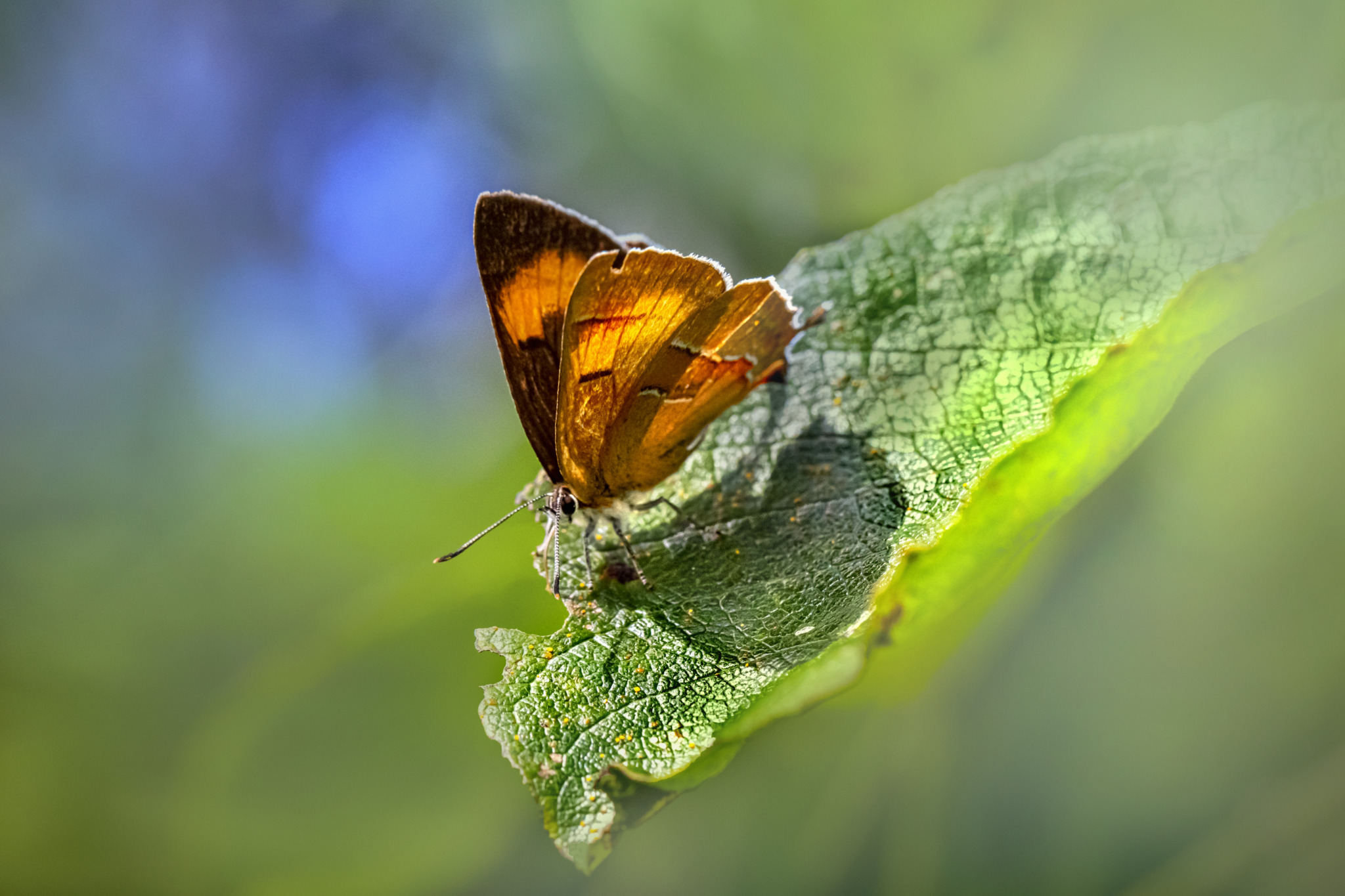The Brown Hairstreak (Thecla betulae) is a small and elusive butterfly belonging to the family Lycaenidae, known for the distinctive hairstreak on its wings. Here’s an overview of this beautiful butterfly:
Physical Description:
- Wingspan: 34–40 mm.
- Upperwings: The upper side of the wings is a rich dark brown, which is where the butterfly gets its common name.
- Underside: The underside of the wings is orange-brown with a distinctive white wavy line (the hairstreak) that runs across the hindwings.
- Tail: Like many hairstreak butterflies, it has small tails on the hindwings that resemble antennae. These tails are used to confuse predators, drawing attention away from the butterfly’s head.
- Sexual Dimorphism: Males and females are similar in appearance, but females have a bright orange spot on the forewing.
Habitat:
- The Brown Hairstreak can be found across Europe and parts of Asia, with populations thriving in woodland edges, hedgerows, and areas with abundant blackthorn (Prunus spinosa), which is the main food plant for the caterpillars.
Lifecycle:
- Eggs: Females lay their eggs on blackthorn twigs in autumn, where they remain dormant throughout the winter.
- Caterpillar: In spring, the caterpillars emerge and feed on the leaves of blackthorn.
- Pupa: The pupation occurs in the leaf litter or hidden in dense vegetation.
- Adult: Adults are seen flying from July to September, though they are often difficult to spot due to their preference for staying high up in trees.
Behavior:
- Elusive: The Brown Hairstreak is known for its elusive behavior. Adults spend much of their time at the tops of trees, only descending to feed or lay eggs, making them difficult to observe.
- Feeding: Adults feed on nectar from a variety of flowers, including bramble and thistle.
Conservation:
The Brown Hairstreak is considered a conservation priority in several regions due to habitat loss, particularly the reduction of hedgerows and blackthorn thickets. Conservation efforts focus on preserving and managing its habitat, particularly the blackthorn bushes required for egg-laying.
The Brown Hairstreak is a beautiful but often hard-to-see butterfly, with a fascinating lifecycle and delicate appearance.
Visited 268 times, 5 visit(s) today
Views: 503
Advertisements
Subscribe to the newsletter:
